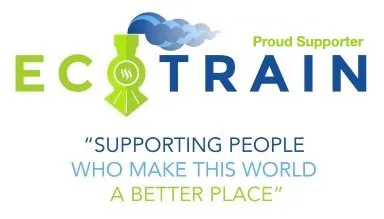I had attended a workshop on nurturing creativity couple of weeks ago. In the workshop, the presenter shared about the big five personal traits which was something new to me.

Our most frequent ways or norms in our actions, thought patterns as well as feelings provide the categorising of one’s uniqueness and differences in personality traits.
Many researchers like Raymond Cattell and Gordon Allport who had stated down more than 5 personality factors that lead to quite a number of discussion since it will be hard to remember and identify the traits when there are too many to remember and categorize.
With more researchers who are looking into personality traits, D. W. Fiske (1949), McCrae & Costa (1987), Norman(1967), Smith(1967) and Goldberg(1981) are the ones who investigated and researched leading to the broad categories of our big five personality traits today.
In simple, big five personality shares about the 5 major factors of our personality traits.
Watch a short video below to have an overview of big five personality traits first.
I will attempt to interpret these big five personality traits but you can always interpret on your own with your own understanding. The implication of being an educator to know the big five personality traits can allow us to know the child as well as our working partners to facilitate and handle learning and relationship more effectively.
One acronym that many people tend to use to remember the big five traits is CANOE to stand for conscientiousness, agreeableness, neuroticism, openness and extraversion.
Conscientiousness
Do you always keep to the schedule before the deadline or you are always missing the deadline?

People who are high in this personality trait tend to be very self-discipline, goal-directed, systematic, take special notes of details and plan in advance.
vs
If you have students who are messy, failed to complete work on time and disorganised, they are probably low in this personality trait.
Agreeableness
Do you consider yourself sympathetic and trusting or unsympathetic and apprehensive toward others?

People who are high in this personality trait tend to be cooperative, caring, helpful, trusting, kind, affectionate and straightforward.
vs
If your students tend to belittle others, selfish, manipulative and self-centred, they are probably low in this personality trait.
Neuroticism
Do you have good emotional management or prone to let your emotions overtake you?

People who are high in this personality trait tend to be sad, depress, anxious, hostile, impulsive, mood swings, easily disturbed, stressful and worry about many things.
vs
On the opposite, those who are low in this trait will have good emotional control, high stress tolerance, carefree and relax.
Openness
Do you enjoy trying out new things or you prefer to stay within your comfort zone?

People who are high in this personality trait tend to be creative, innovative, adventurous, risk takers, like challenges and enjoy thinking about abstract or problematic concepts.
vs
People who always like things to stay the same, resistance to new ideas and dislike theoretical concepts are usually low in this personality traits.
Extraversion
Are you an introvert or extrovert?

People who are high in this personality trait tend to be chatty, sociable, easily excited, expressive, assertive, outgoing, have a wide social circle and like to be in the centre of attention.
vs
On the opposite, people who are low in this trait will tend to prefer to be left alone, feel exhausted in socialising, quiet, like to stay low profile and careful with what they want to say.
In conclusion
With the starter question given for each of the big five personality traits, you can easily form your own interpretation.
Our personalities are shaped mainly by both genetic and environmental factors. Even though by nature, a student may tend to be shy and quiet but we can nurture the child to participate more in discussion through our questioning technique in our classroom.
Big five personality traits provide a broad categorisation of personality. Many people may exhibit many of these traits together.
Knowing these traits do allow us as educators to predict possible reactions among our students during classroom activities so that we can prevent possible disruption and raise the effectiveness of our lesson plan.
Reference:
Judge, T. A., Higgins, C. A., Thoresen, C. J., & Barrick, M. R. (1999). The big five personality traits, general mental ability, and career success across the life span. Personnel psychology, 52(3), 621-652.
Barrick, M. R., & Mount, M. K. (1991). The big five personality dimensions and job performance: a meta‐analysis. Personnel psychology, 44(1), 1-26.
Komarraju, M., Karau, S. J., & Schmeck, R. R. (2009). Role of the Big Five personality traits in predicting college students' academic motivation and achievement. Learning and individual differences, 19(1), 47-52.



Disclaimer: This is my personal reflection and I am not in any position to instruct anyone what they should do. I am not responsible for any action taken as a result of this post. My post can only be a reference for your further research and growth. By reading this post, you acknowledge and accept that. All images and pictures were taken from google images that are free from copyright under labelled for reuse.
Posted from my blog with SteemPress : http://fun2learn.vornix.blog/2018/08/17/a-reflection-about-the-big-five-personality-traits/
